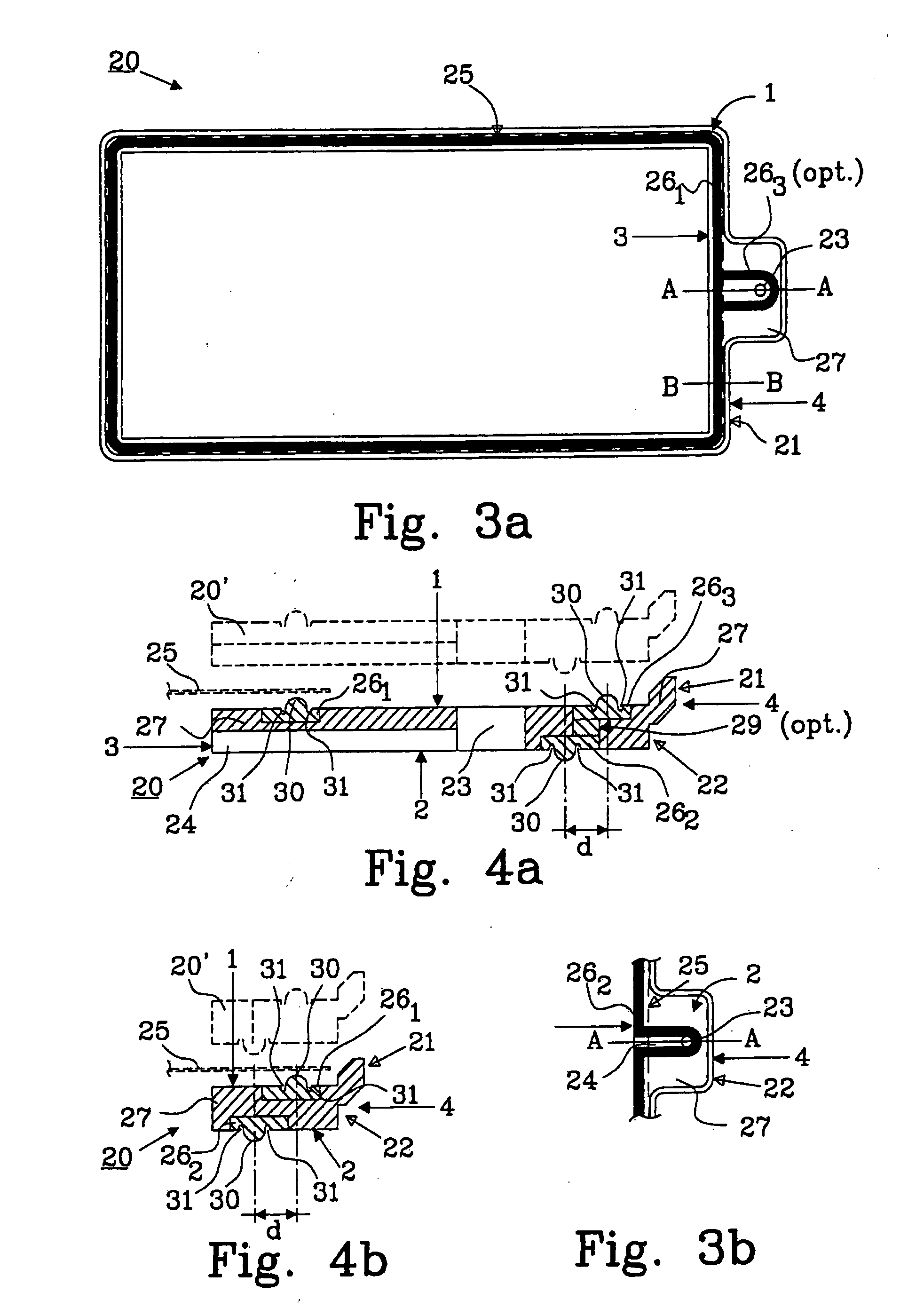Gasket, a bipolar battery and a method for manufacturing a gasket
a gasket and bipolar battery technology, applied in the direction of sustainable manufacturing/processing, nickel accumulators, cell components, etc., can solve the problems of difficult to achieve the proper combination of above characteristics in secondary (rechargeable) batteries, the design of starved electrolyte batteries is typically much less tolerant of electrolyte loss
- Summary
- Abstract
- Description
- Claims
- Application Information
AI Technical Summary
Benefits of technology
Problems solved by technology
Method used
Image
Examples
Embodiment Construction
[0035] Benefits of the bipolar battery design include simplicity and low resistance losses. The parts count of the battery is relative low, and may consist only of endplates and biplates, with appropriate assembly of electrodes, separators and electrolyte and sealing components. Batteries of a desired voltage are constructed by stacking the required number of biplates. The electrical connections between the cells are made as the battery is stacked, since each biplate is electrically conductive and impervious to electrolyte.
[0036] With terminals at each end of the stack, the flow of current is perpendicular to the plate, which ensures uniform current and voltage distribution. Since the current path is very short the voltage drop is significantly reduced.
[0037] Bipolar batteries will also have significantly reduced weight, volume and manufacturing costs due to elimination of components and the manufacturing approach.
[0038] A problem with bipolar batteries is obtaining a reliable se...
PUM
| Property | Measurement | Unit |
|---|---|---|
| hydrophobic properties | aaaaa | aaaaa |
| elastic modulus | aaaaa | aaaaa |
| pressure | aaaaa | aaaaa |
Abstract
Description
Claims
Application Information
 Login to View More
Login to View More - R&D
- Intellectual Property
- Life Sciences
- Materials
- Tech Scout
- Unparalleled Data Quality
- Higher Quality Content
- 60% Fewer Hallucinations
Browse by: Latest US Patents, China's latest patents, Technical Efficacy Thesaurus, Application Domain, Technology Topic, Popular Technical Reports.
© 2025 PatSnap. All rights reserved.Legal|Privacy policy|Modern Slavery Act Transparency Statement|Sitemap|About US| Contact US: help@patsnap.com



